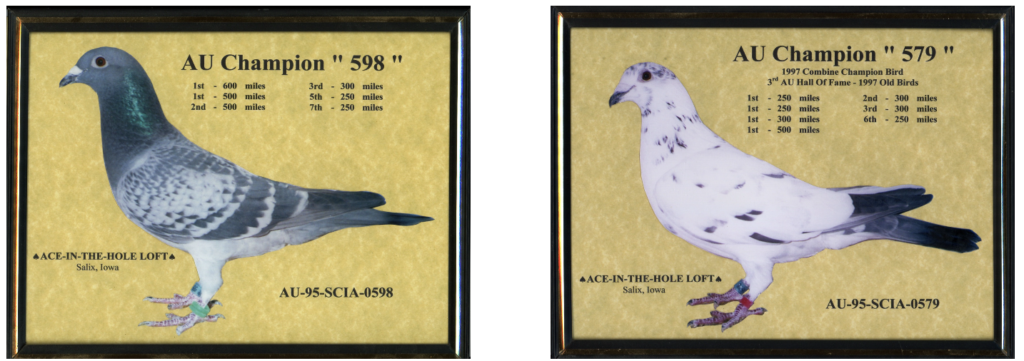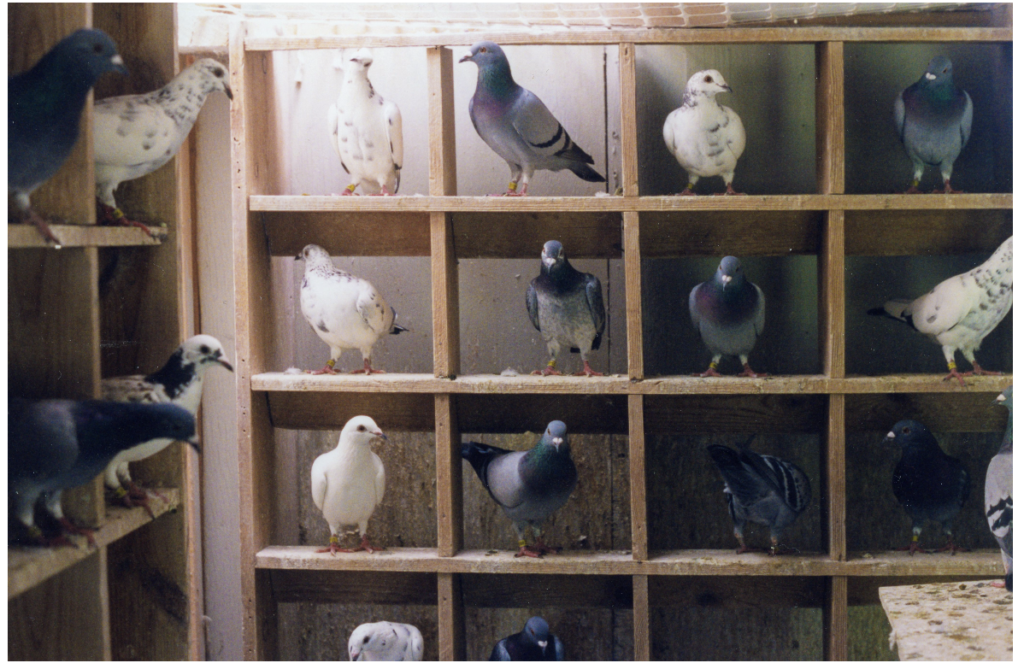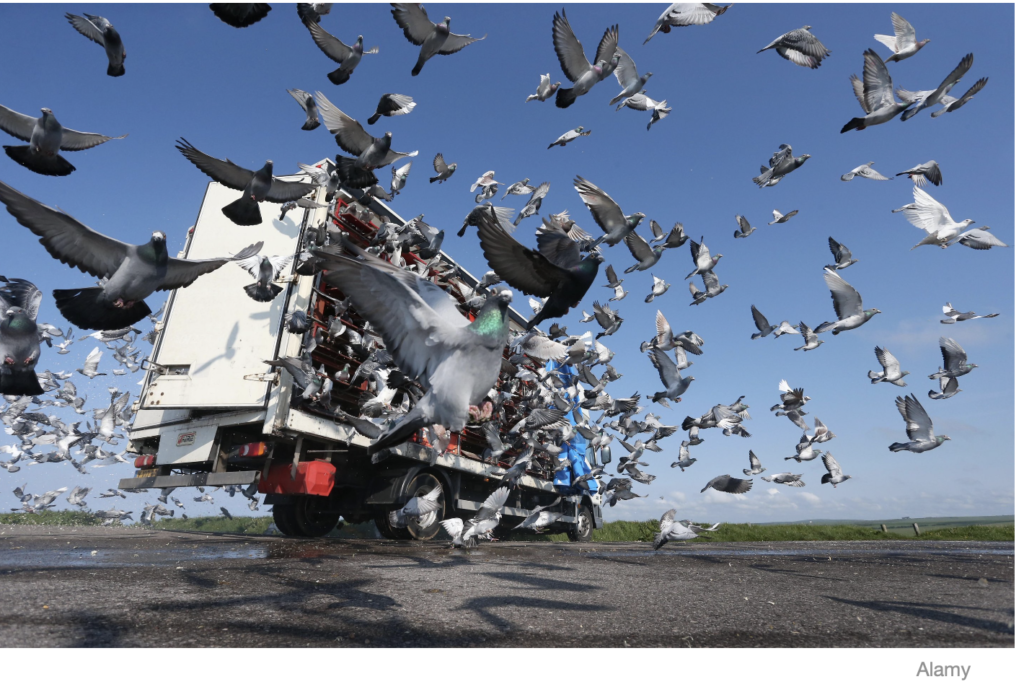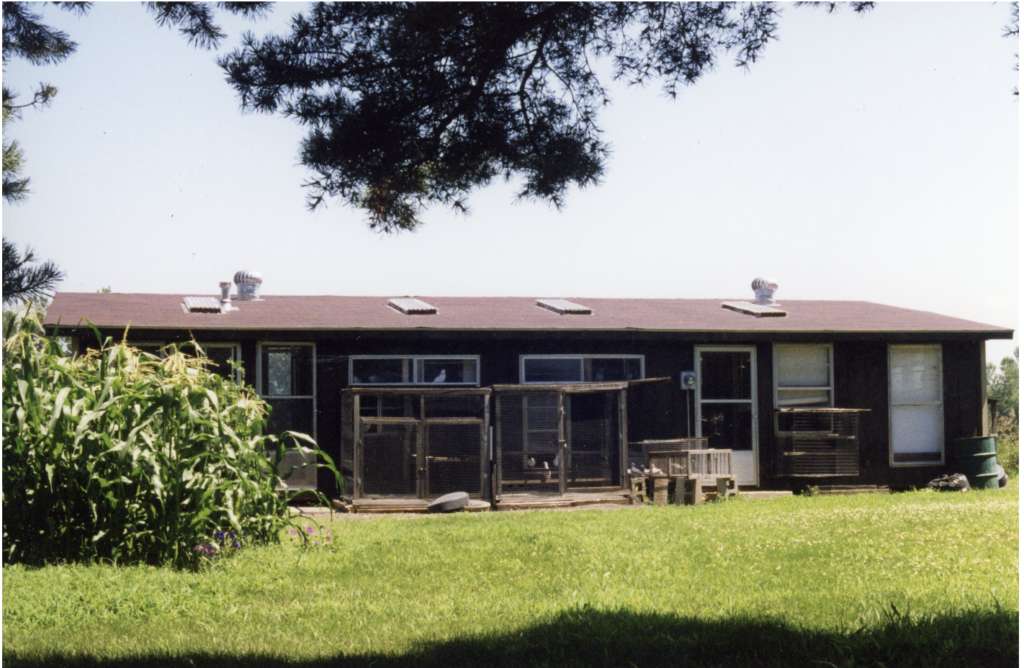I recently had the great fortune to reconnect with an old friend, Mark. It had been decades since we had spoken, and in our conversations since, I have come to discover something fascinating about this man. Actually, I’ve come to find out several things. Notable among those things is that Mark served twenty-four years in the US Army Reserves, where he had immensely diverse training in everything from marksmanship to surveying. As an avid outdoorsman, Mark was a natural fit for the wildlife and park management position he held in his full-time job as a District Resource Manager in Iowa. He built a home along the eastern bank of the Missouri River – not far from where Lewis and Clark established an encampment in the late summer of 1805 while embarking upon their famous exploration. Never one to rest on his laurels, Mark found interest in a fascinating hobby – breeding and racing pigeons. He spent eleven years pursuing his new-found passion. The passion still echoes in his voice when he talks about it. I’ve learned a lot from Mark about these remarkable birds in a very short time. They are bred for speed and can achieve speeds of up to 90 MPH in brief bursts, but at a more leisurely pace of 50 mph, they can travel 500 miles and find the loft they call home. I invited Mark to pen a guest article for my blog, and he, thankfully, obliged. This is his story. You will learn more about pigeons and racing in the next three minutes than 99% of the population will ever know.

Pigeons, Cherry Malts, and Gold

Maybe you’ve heard it said that ‘the poor man’s racehorse’ was the Whippet. This dog breed was raced by blue-collar workers in the 19th century. Others have said that homing pigeons fit the bill. A racehorse is certainly out of my reach, but a homing pigeon is another story, literally.
My story…
Pigeons are a good substitute for game birds when training bird dogs. I was hoping to find a few for my new pup, who was the perfect age for training to ‘point’.
Homing pigeons are selectively bred for their homing instincts and racing abilities. Some just don’t cut the mustard. These ‘culls’ were what I needed to train my dog.

My wife happened to know someone who had homing pigeons. Bob, an elementary principal, dropped off a few ‘culls’ one afternoon. The timing was everything. My daughter was getting off the school bus when she saw the birds and fell in love with them. No way was I going to harm these beautiful birds!
Seeing my predicament, Bob said, “You know, you could build a loft for the birds. She would love taking care of them.” I was stuck, and Sarah jumped for joy.

After learning what pigeons could do in this sport, I was hooked. For eleven years, racing homing pigeons became my passion.

Pigeon Racing, in short, is where competing birds are taken from their lofts and then released to race home. The time the pigeon takes to get home and the distance it has flown are recorded, and the fastest bird is declared the winner.

I quickly learned that racing pigeons are not your run-of-the-mill city street or barnyard pigeons but truly pampered thoroughbreds with impressive pedigrees bred for their navigation instincts, speed, and endurance.

Homing pigeons are ‘trained’ and conditioned for longer distances or shorter sprint races. Long before work and in the dark, birds are often put in crates for a ride in my pickup. The birds are released at dawn at an appropriate release point.

Nutrition is a key component of racing successfully. Yes, depending on the distance, we do carbohydrate load first and lastly load up on protein with citric acid. (10-12 organic peanuts and lemon water solution) Sarah would count out the peanuts for each bird.
The ‘poor man’s racehorse’ saying, when applied to pigeons, may not be so true today. One of my ‘foundation’ birds was a grandson of ‘The White Bandit’. Chic Brooks brought him over from Belgium after laying down $35,000.
Learn more here….

Pigeon auctions are held online and worldwide in small clubhouses, grandiose event centers, and everywhere in between. Many sell for $100-$400, and others for much more.

The most expensive pigeon on record is a Belgian racing pigeon named “New Kim”, which sold for a staggering 1.6 million euros (around 1.9 million US dollars) in a public auction in November 2020.
We built a racing pigeon club in our small town.

Eventually, we merged our club with clubs in some larger cities. These ‘combines’ can have large races, with well over 1000 birds in a race. To pull this off, much planning, work, and coordination were needed. As club president, I was busy.
Much work needed to be done before each race. Everyone had a task. Before microchips, rubber leg bands with a unique number were fitted to each bird’s leg. Sarah’s job was running the ‘banding’ contraption. Special clocks were synchronized. Seals to prevent tampering were placed on transport cages and clocks. Loading and selecting drivers for our truck was done. All birds were transported and merged in the largest city, where the entirety was loaded on a large transport truck specially designed to release the birds.

Races could be from 100-600 miles. Winners, even on 600-mile races,
are most often ‘clocked in’ before the sun sets that day. ‘Old birds’ are raced in the spring. ‘Young birds’ in late summer.
Before microchips became the norm, when a bird returned to its loft from a race, you had to remove a unique rubber leg band. This band was placed into a special clock recording the time. Sarah and I had to be waiting for the birds to do this.

Some of our best times together were waiting for the birds to come in from a race. There in our backyard, we watched the sky with excitement. We talked about which birds we thought might win or where we thought the birds might be and about many other things.
Specialty races are where young birds, possibly from many states or countries, are ‘imprinted’ to one loft and raced for money or other prizes. These races are called one-loft races.
South Africa is the home of the richest one-loft race in the world, the Million Dollar Pigeon Race. The Race involves 4,300 birds from 25 countries and has a prize fund of $1.3 million. The runners-up win cars and smaller monetary prizes, with the overall winner receiving $200,000.

In my case, money was not the prize. My daughter was an eager participant for a few years. She held birds steady as I stitched them back together from an attack by a hawk. She helped me repair flight feathers and vaccinate the birds. We celebrated each race win with a cherry malt. Time spent together and memories made were better than gold.
Fittingly, I sold my breeders to help pay for her wedding.


Welcome to 3-Minutes A Day University, where you can learn a little about a lot of things every day in three minutes or less. We help you expand your knowledge and understanding of the real world, and 3-MAD University is tuition-free. Our wide-ranging syllabus includes a fascinating insight into topics including Health and Medicine, Science, Sports, Geography, History, Culinary Arts, Finance and the Economy, Music and Entertainment, and dozens more. You will impress yourself, your friends, and your family with how easy it is to learn facts and perspectives about the world around you. One topic you will never find covered is politics. We hope you enjoyed the previous three minutes. If you liked this post, please pass it along to a friend.
Was this email forwarded to you? Subscribe Here.
© Copyright 2024. 3-Minutes A Day University All Rights Reserved. Unsubscribe

